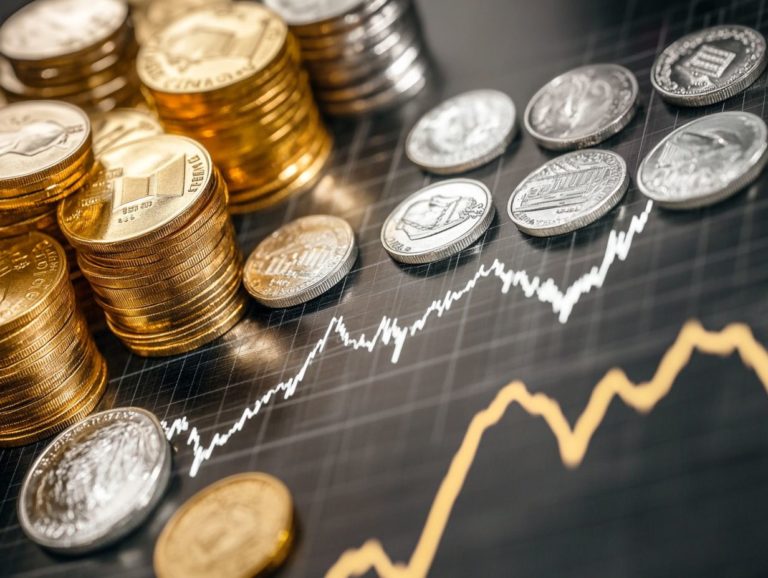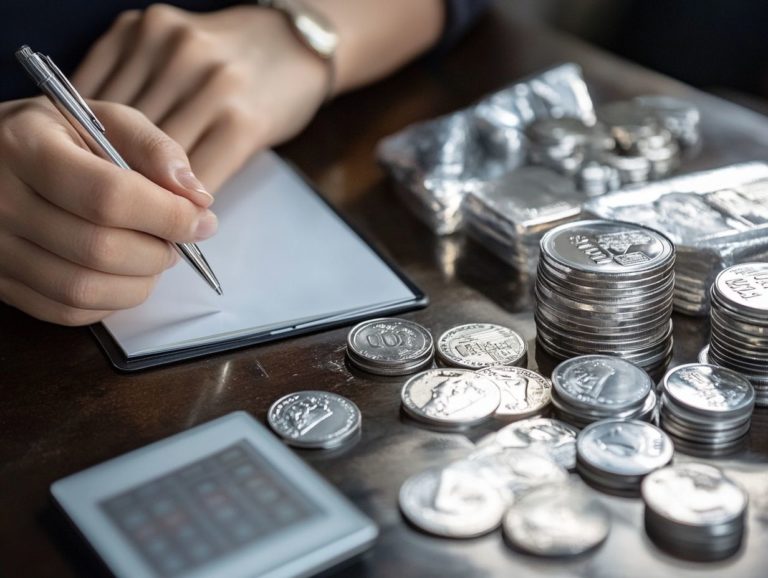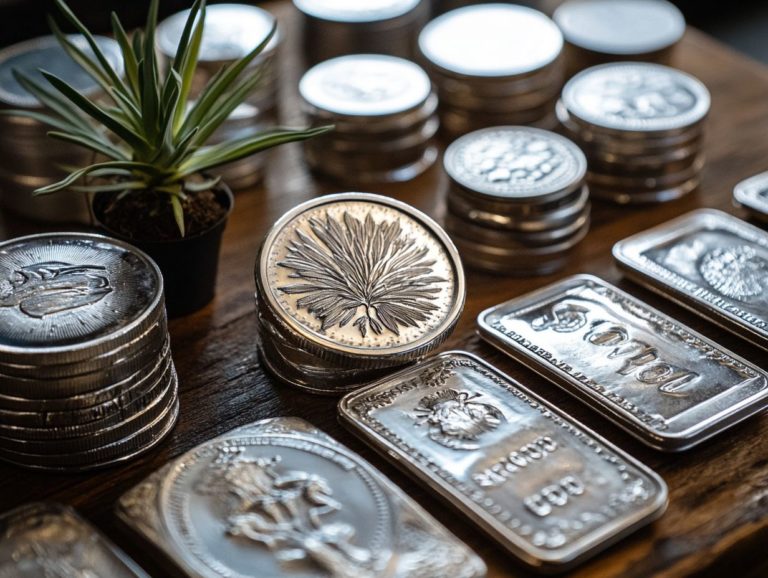How to Analyze Silver Market Sentiment
Understanding market sentiment is essential for anyone navigating the silver market.
This article delves into the concept of market sentiment and its profound impact on silver prices. You will uncover the myriad factors that shape this sentiment, ranging from economic and political influences to the intricate dynamics of supply and demand.
You will also gain insights into analytical tools that can help you interpret sentiment data effectively. By the end, you will be well-equipped to make informed decisions in this ever-evolving market landscape.
Contents
- Key Takeaways:
- Understanding Silver Market Sentiment
- Factors that Influence Silver Market Sentiment
- Tools for Analyzing Silver Market Sentiment
- Interpreting and Using Market Sentiment Data
- Frequently Asked Questions
- What is market sentiment and why is it important in analyzing silver?
- How can I determine the sentiment of the silver market?
- What are some indicators of bullish sentiment in the silver market?
- How does a bearish sentiment in the silver market affect prices?
- Can market sentiment be accurately predicted?
- How can I use market sentiment to make better investment decisions in silver?
Key Takeaways:
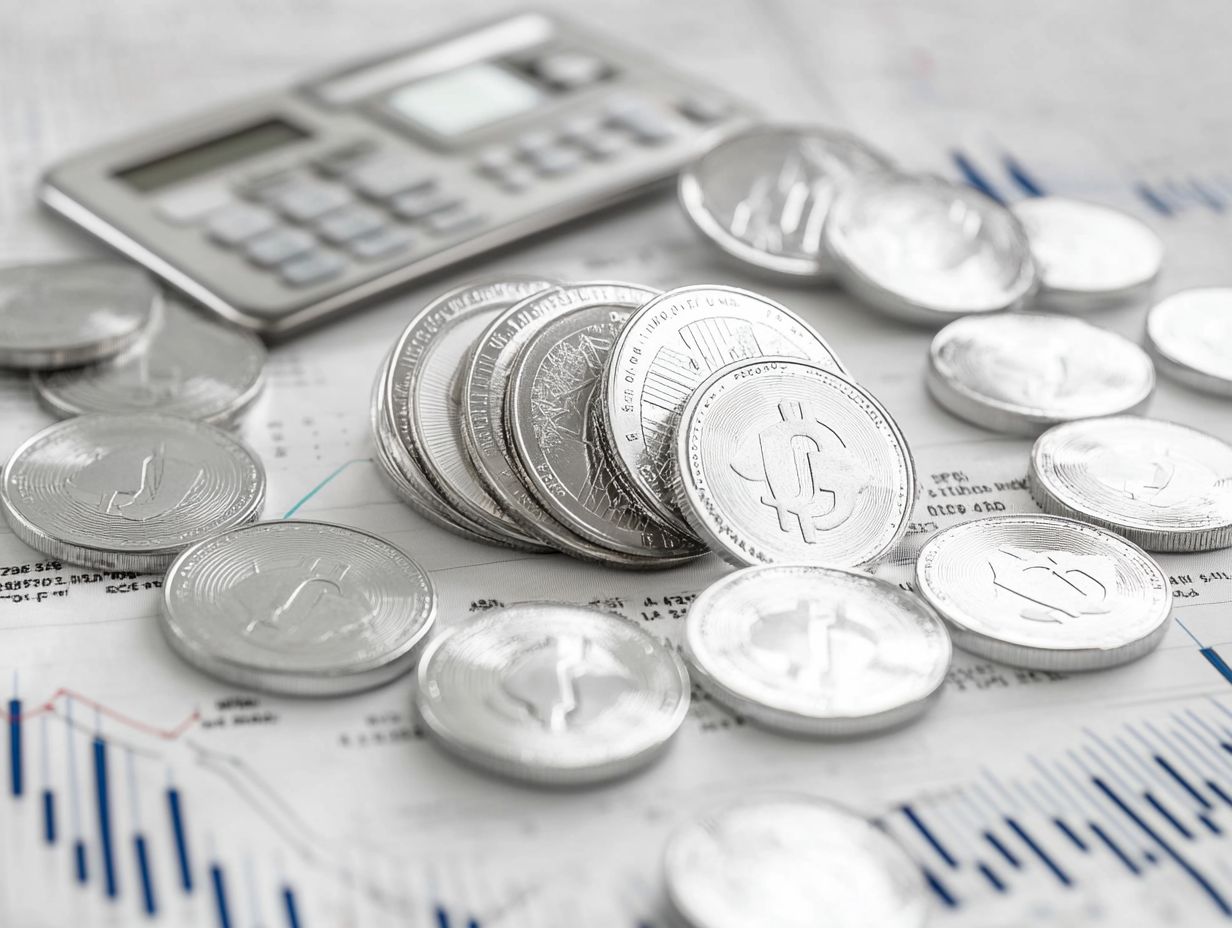
- Understanding market sentiment is crucial in the silver market as it helps predict price movements and identify investment opportunities.
- Economic and political factors, supply and demand, and investor behavior are key influencers of silver market sentiment.
- Technical and fundamental analysis, along with sentiment indicators, can be used to analyze silver market sentiment and make informed trading decisions.
Understanding Silver Market Sentiment
Understanding silver market sentiment is crucial for navigating financial markets successfully, especially for investors eager to seize opportunities in precious metals like silver. Market sentiment embodies the collective attitude of participants toward silver, shaped by influences such as economic conditions, geopolitical dynamics, and the prevailing mood among investors.
By examining this sentiment, you can craft effective trading strategies that account for both bullish and bearish trends, unveiling valuable insights into potential investment opportunities.
What is Market Sentiment?
Market sentiment captures the overall attitude and behavior of investors and traders toward an asset or financial market, significantly impacting price fluctuations and trading decisions.
Sentiment can be split into two types: bullish, when optimism reigns and prices are expected to rise, and bearish, when pessimism prevails and prices are expected to drop. Various psychological factors play a pivotal role in shaping these sentiments. Emotional trading can lead to impulsive decisions, often amplifying market volatility.
You often gauge investor sentiment through metrics like the commitment of traders, which offers insights into market positions, and trading volumes, reflecting the intensity of trading activity. Together, these components create a dynamic interplay that drives market trends, making it essential to understand sentiment to develop successful trading strategies.
Why is it Important in the Silver Market?
The significance of silver market sentiment lies in its power to shape your trading strategies and investment choices, particularly as silver serves as a safe-haven asset during periods of economic uncertainty.
As market dynamics shift with changing economic conditions, closely monitoring sentiment indicators helps you anticipate potential price movements. Understanding silver market dynamics can reveal how an uptick in optimism can lead to increased trading volumes, pushing prices higher. Conversely, widespread fear may trigger sell-offs, adding to market volatility.
Traders often leverage this sentiment to recalibrate positions, adapting to short-term trends or enduring shifts in market fundamentals. Thus, grasping market sentiment becomes essential for navigating the intricate landscape of silver trading. To do this effectively, it’s helpful to understand how to analyze silver market reports, enabling you to make informed decisions that resonate with current market perceptions and potential future trajectories.
Factors that Influence Silver Market Sentiment
Various factors shape your perception of the silver market, including economic conditions, geopolitical influences, supply and demand dynamics, and the behaviors of investors and traders.
All these elements come together to create enticing trading opportunities within the market.
Economic and Political Factors
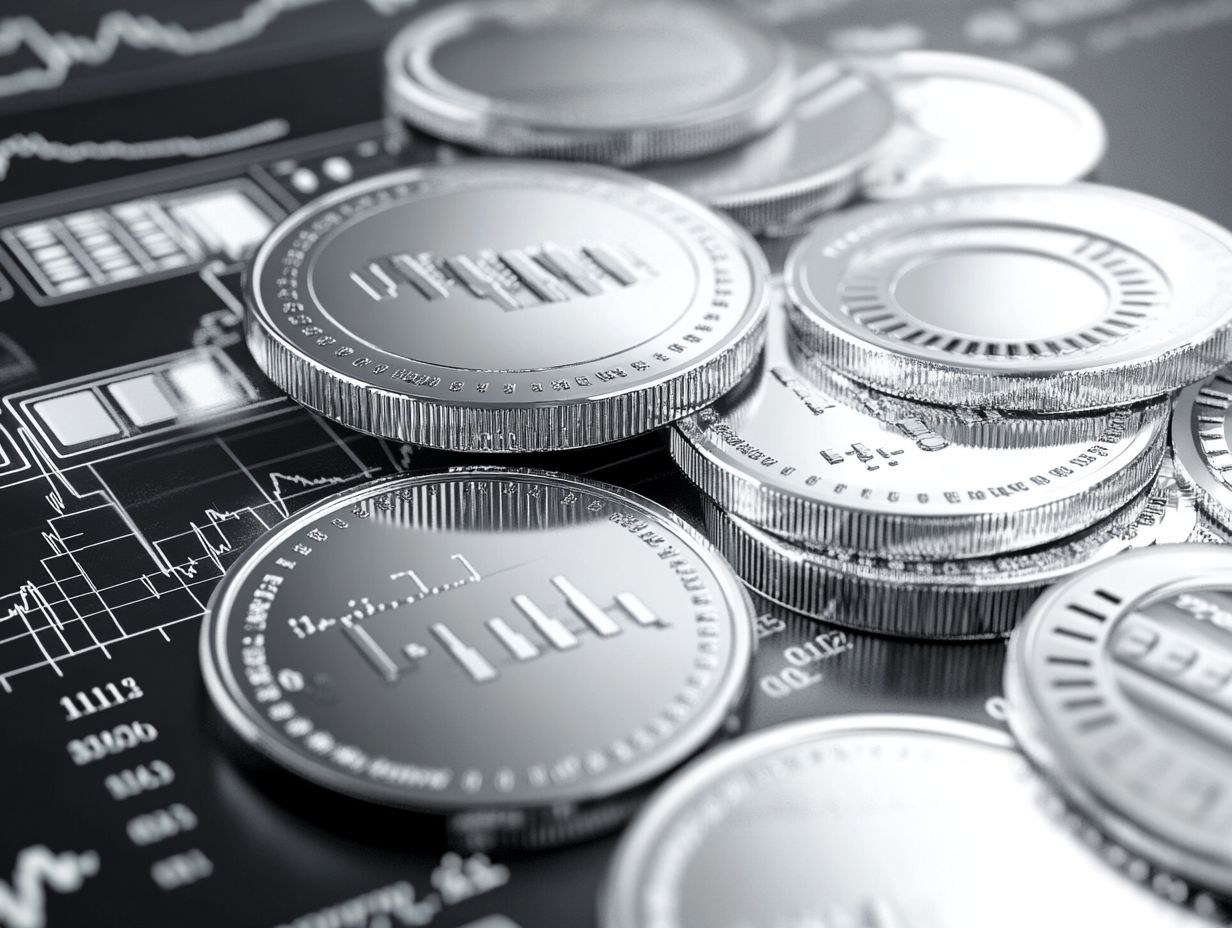
Economic and political factors affect how you see the silver market. Elements like inflation, interest rates, and central bank policies the rules and actions taken by a country’s central bank to influence the economy play a direct role in your investment decisions regarding precious metals.
As these variables shift, they create an atmosphere of market volatility, leading to fluctuations in silver prices. This prompts you to adapt your trading strategies. When economic indicators hint at a downturn or political instability surfaces, forecasts often indicate an uptick in silver demand, as it is considered a safe haven. During these times, you might exercise more caution to safeguard your assets in the face of uncertainty. To stay informed, it’s also beneficial to learn how to read palladium market reports for insights on related precious metals.
The interaction between these factors also influences your individual investment choices and drives broader market trends, affecting collective behaviors within the silver trading arena.
Supply and Demand
The principles of supply and demand are essential for grasping silver market sentiment. When these dynamics shift, expect significant price movements and valuable trading opportunities.
A surge in silver demand, whether from industrial applications or investment interest, can send prices soaring, signaling optimistic trading prospects. Conversely, if supply outstrips demand, it may indicate bearish market conditions, prompting a more cautious trading approach. To navigate these fluctuations effectively, learn how to stay updated on silver market news.
As you analyze these fluctuations, adjust your price expectations and positions while keeping a sharp eye out for indicators that might signal a reversal or continuation of the trend. By understanding how these factors interact, you can make informed decisions and seize potential profit opportunities.
Investor Behavior
Investor behavior is crucial in shaping market sentiment. Elements like emotional trading and the moves of contrarian investors can greatly impact price expectations in the silver market.
The dynamic between fear and greed creates fluctuations, pushing individuals to make impulsive trading decisions driven by fleeting emotions instead of well-thought-out strategies. For example, in times of economic uncertainty, fear can trigger panic selling, while moments of optimism may spark speculative buying.
Your perception of risk significantly influences your actions; if you view silver as a safe haven asset, your reactions during market volatility will likely differ from those who see it as just another commodity. By understanding these behaviors, you can refine your trading strategies and enhance your overall market predictions. For deeper insights, check out silver market insights.
Tools for Analyzing Silver Market Sentiment
Utilizing the appropriate tools to analyze silver market sentiment is crucial for crafting effective trading strategies and making well-informed investment decisions based on market trends and indicators.
By harnessing these insights, you can navigate the complexities of the market with confidence and precision.
Technical Analysis
Technical analysis is essential for grasping silver market sentiment. By utilizing tools like moving averages and the volatility index, you can predict price movements and refine your trading strategies.
When you analyze historical data, you can uncover patterns and correlations that precede price fluctuations. These insights generate trading signals, helping you pinpoint optimal entry and exit points. Incorporating indicators such as the Relative Strength Index (RSI) allows you to assess whether silver is overbought or oversold, giving you a clearer view of market trends. For more detailed strategies, check out this guide on how to track silver market prices effectively.
Utilizing candlestick patterns can further elevate your analysis, providing a visual representation of potential market reversals or continuations. By effectively combining these tools and strategies, you position yourself to make informed decisions that align with the ever-evolving nature of the silver market.
Stay informed and make your next move wisely in the silver market!
Fundamental Analysis
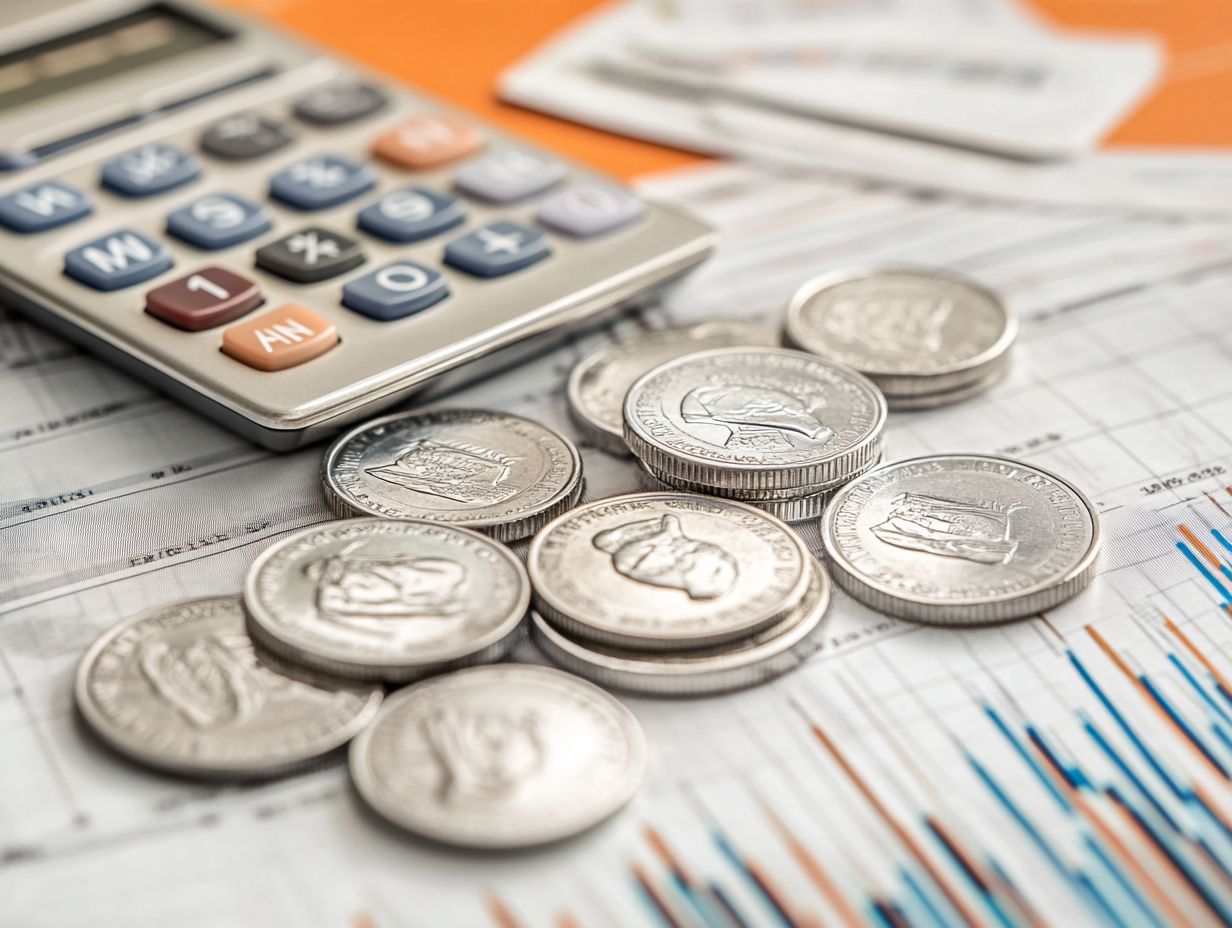
Fundamental analysis is key as you navigate the silver market. It helps you gauge market sentiment by focusing on economic conditions and the true worth of investments in precious metals.
This approach considers factors like demand and supply, global events, and broader economic indicators that drive price changes. When the economy weakens, many investors flock to safe-haven assets like silver.
Speculation impacts price volatility. Traders look to profit from expected market shifts, which means understanding these elements helps you make informed decisions about your investment portfolio.
Sentiment Indicators
Sentiment indicators, such as the Fear and Greed Index, help you gauge market feelings and refine your strategies. They provide insights into investor emotions, revealing the market’s psychology.
For example, the Commitment of Traders report shows the positions of various market players. This report helps you spot potential trends and price movements.
Analyzing these sentiments lets you spot lucrative trading opportunities. Recognizing shifts in sentiment improves your ability to manage risk and time your market actions effectively.
Interpreting and Using Market Sentiment Data
Skillful interpretation of market sentiment data leads to informed trading decisions. This approach uncovers lucrative investment opportunities in the silver market.
Key Indicators to Look Out For
Identifying key indicators is crucial for assessing market sentiment. Tools like the volatility index and moving averages should lead your analysis.
Pay attention to trading volumes, which reveal market strength and potential price movements. Understand risk perception; changes in investor sentiment can lead to quick shifts in supply and demand.
Monitor economic indicators like interest rates and unemployment figures. This information adds depth to your analysis and helps anticipate market shifts.
By keeping a close watch on these elements, you can develop strategies that maximize gains and reduce risks, leading to better decision-making in your trading activities.
How to Make Informed Decisions Based on Sentiment Analysis
Making informed decisions through sentiment analysis involves understanding market psychology. Combine various strategies that align with current sentiment.
By assessing the emotions of traders and investors, you can create actionable strategies that enhance your portfolio. This approach highlights potential trading signals and aids in forecasting trends.
Understanding collective sentiment lets you prioritize assets, decide when to enter or exit positions, and manage risks effectively. By integrating sentiment analysis into your trading, you ensure agile decision-making in the ever-changing market landscape.
Frequently Asked Questions
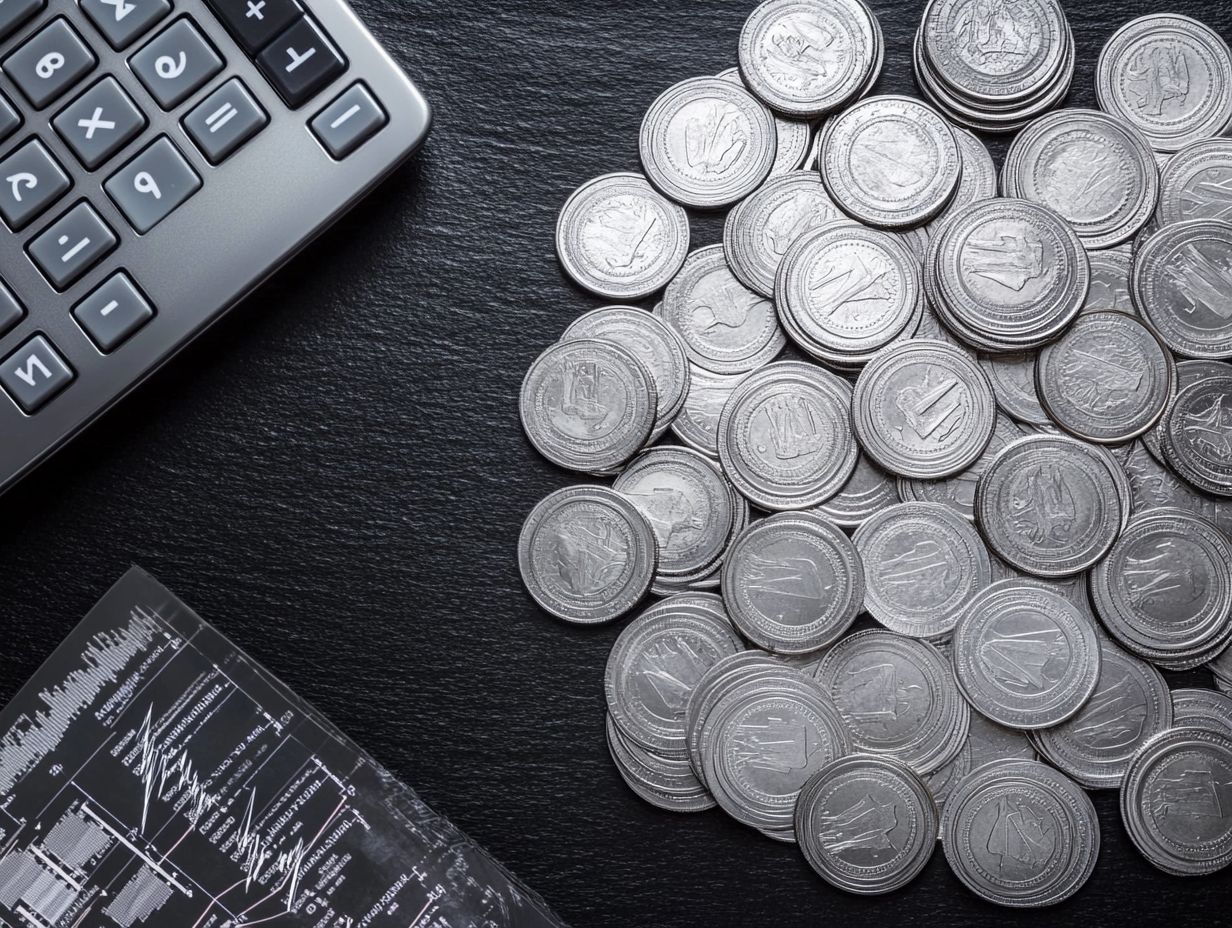
What is market sentiment and why is it important in analyzing silver?
Market sentiment refers to the overall attitude or feeling of investors towards a particular market. For silver, it reflects how buyers and sellers feel and what they expect.
Analyzing market sentiment provides insights into current and future trends of silver, making it crucial for investment decisions.
How can I determine the sentiment of the silver market?
There are several ways to analyze silver market sentiment. You can look at market indicators, news coverage, and sentiment surveys or analysis tools. Consider various sources to fully grasp the market sentiment.
What are some indicators of bullish sentiment in the silver market?
Indicators of bullish sentiment include rising silver prices, increased demand, and positive news coverage. Factors like a weaker US dollar and global economic uncertainty can also boost bullish sentiment.
How does a bearish sentiment in the silver market affect prices?
A bearish sentiment indicates that investors have a negative outlook on silver, leading to selling and driving prices down. This sentiment can be influenced by a stronger US dollar and better economic data.
Monitoring market sentiment helps you anticipate price changes.
Can market sentiment be accurately predicted?
While it’s impossible to predict market sentiment with 100% accuracy, tools and techniques like sentiment analysis and technical analysis can help identify current and potential shifts in sentiment.
How can I use market sentiment to make better investment decisions in silver?
By analyzing market sentiment, you gain insights into trends, allowing you to make informed investment decisions. Knowing if sentiment is bullish or bearish helps you decide when to buy, sell, or hold silver.
Also, consider other factors like supply and demand, geopolitical events, and economic data when making your investment choices.











